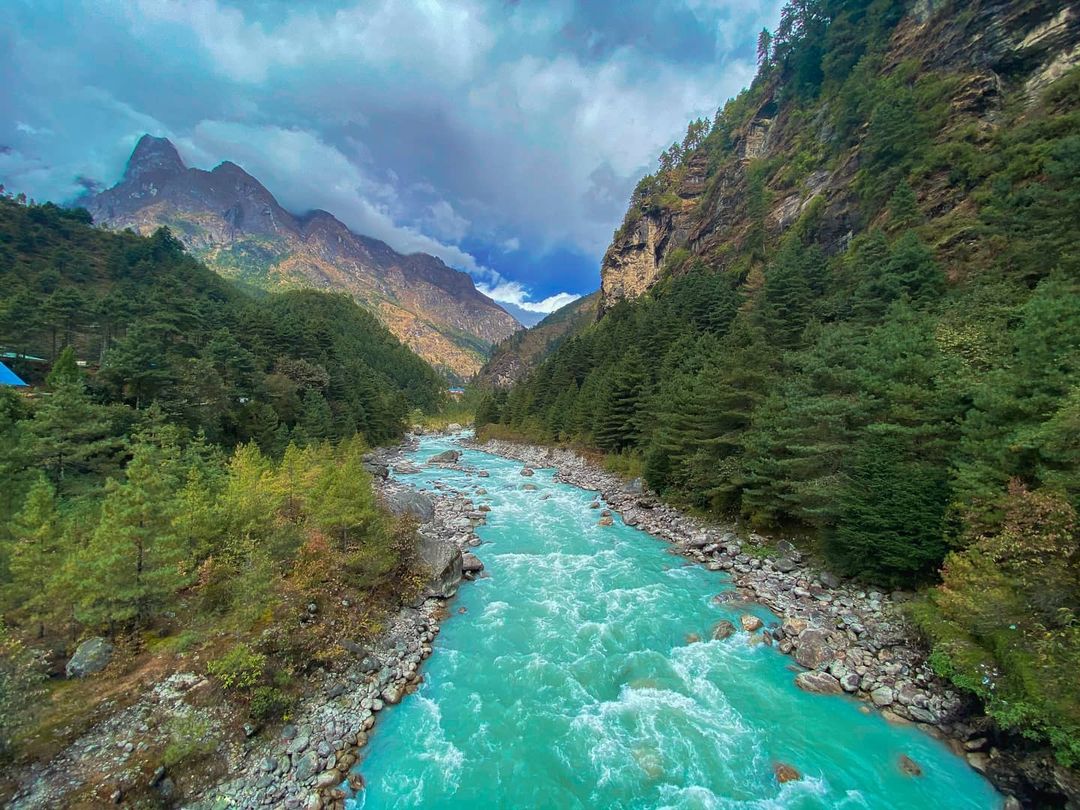Share this Article

Introduction
Nepal, a country known for its breathtaking landscapes and rich cultural heritage, is home to some of the most fascinating natural wonders. Among these is the legendary Singing River, a phenomenon that has intrigued locals and visitors alike for centuries. This river, known for producing mysterious melodic sounds, holds a significant place in Nepalese folklore, environmental studies, and tourism. This article delves into the origins, scientific explanations, cultural significance, and the challenges faced by the Singing River of Nepal.
The Legend and Cultural Significance
The Singing River is often associated with various myths and legends passed down through generations. One of the most popular tales speaks of celestial beings who once descended upon the river to sing and dance, leaving behind an eternal melody that still resonates through the waters. Another folklore suggests that the river carries the voices of ancient spirits who guard the land and its people.
For the local communities, the Singing River is not just a natural marvel but a sacred entity. Many believe that its melodies bring good fortune and peace. Rituals and festivals are often conducted along its banks, where devotees gather to offer prayers and seek blessings. The river also plays a role in traditional Nepalese music, inspiring folk songs and poetic expressions.
Additionally, many shamans and spiritual healers visit the river, claiming that its sounds have therapeutic and mystical properties. Some believe the river's song changes with the seasons, carrying messages from the spiritual world. The site has become a pilgrimage for those seeking divine connection, inner peace, and enlightenment.
Scientific Explanations Behind the Singing River
While legends and beliefs add a mystical aura to the Singing River, scientific research has sought to understand the true cause of this phenomenon. Some of the key explanations include:
- Geological Formations: The riverbed consists of unique rock formations that, when interacted with by flowing water, produce harmonic sounds. The specific arrangement of these stones creates natural resonance, leading to the audible effect.
- Air and Water Currents: Certain air and water movements within the riverbed generate frequencies that result in the production of sounds resembling a song or melody. The interaction between wind, water flow, and surrounding caves may amplify these sounds.
- Aquatic Life Contributions: Some researchers suggest that aquatic organisms, such as certain species of fish or amphibians, might contribute to the sounds heard along the river. These creatures produce vibrations or calls that, when combined with environmental acoustics, create the illusion of a singing river.
- Magnetic and Electromagnetic Factors: Some scientists hypothesize that certain minerals present in the riverbed might interact with Earth's magnetic field, causing vibrations that manifest as audible sounds. This theory aligns with the belief that the river's melody changes with atmospheric and geological shifts.
- Underground Water Channels: Another explanation suggests that underground water streams or hidden caverns beneath the riverbed may be responsible for producing the singing effect. The movement of water through these cavities could generate echoes that blend with the river’s natural sounds.
Location and Accessibility
The Singing River is located in a remote part of Nepal, nestled between lush green hills and dense forests. While the exact location is often debated due to the presence of multiple rivers exhibiting similar phenomena, one of the most recognized sites lies within the Himalayan foothills.
For those who wish to visit, trekking routes and guided tours are available. The journey to the Singing River takes adventurers through picturesque villages, terraced farmlands, and ancient temples, offering a blend of natural beauty and cultural immersion.
The best time to visit is during the spring and autumn months when the weather is favorable, and the sounds of the river are most distinct. Local guides offer storytelling sessions, providing insights into the river’s significance and the myths surrounding it.
Ecological Importance and Conservation Efforts
Beyond its mystical and scientific allure, the Singing River plays a crucial role in the local ecosystem. It serves as a primary water source for nearby communities and supports diverse flora and fauna. However, like many natural wonders, the river faces threats due to climate change, pollution, and human activities.
Efforts to protect and preserve the Singing River include:
Government and NGO Initiatives: Several conservation programs focus on maintaining the water quality and preventing deforestation around the river’s catchment area.
Community Awareness Campaigns: Local organizations educate residents about sustainable practices to ensure minimal environmental impact.
Eco-tourism Development: Responsible tourism practices are encouraged to ensure that visitors can enjoy the Singing River without harming its delicate balance.
Scientific Studies and Monitoring: Universities and research institutions are conducting ongoing studies to understand the river’s acoustic phenomena and monitor environmental changes.
Legal Protections: Some environmentalists advocate for the Singing River to be declared a protected site to prevent commercial exploitation and uncontrolled development.
The Singing River in Modern Nepal
As Nepal continues to embrace modernization, the Singing River remains a symbol of the country’s harmonious relationship with nature. It attracts researchers, tourists, and spiritual seekers, each drawn by its unique charm. Local artisans and musicians often incorporate the river’s legend into their works, further immortalizing its significance.
Moreover, the Singing River is gaining attention in international media, bringing a new wave of interest from global travelers. Documentaries and nature programs have showcased the phenomenon, sparking curiosity and increasing tourism in the region. Many believe that understanding and preserving the Singing River could provide valuable insights into sound ecology and the natural world.
Conclusion
The Singing River of Nepal is a remarkable blend of nature, culture, and mystery. Whether viewed through the lens of folklore, science, or conservation, it remains an awe-inspiring phenomenon. As efforts continue to preserve its purity and significance, the Singing River stands as a testament to Nepal’s rich heritage and natural wonders. For those seeking an experience that transcends the ordinary, a visit to the Singing River promises an unforgettable journey into the heart of Nepal’s mystical landscapes.
The interplay between science and mythology makes the Singing River an enduring enigma. Whether one believes in its supernatural origins or sees it as an extraordinary natural occurrence, the river continues to captivate and inspire those who listen to its song.
Categories:
Nature & Wildlife
Tags:
Singing River
,
River of Nepal







